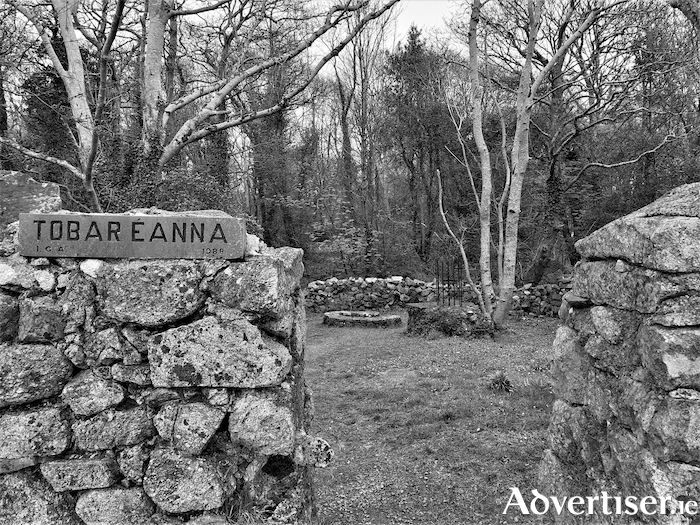In many cases, ancient folklore linked holy wells with a god, a goddess, a mythical creature, or a serpent; they were places of pagan worship which were at odds with Christianity. Ever since medieval times, efforts have been made to stop well-worshipping and to Christianise them. Many townlands have a water source that has been marked out for special devotion, most of them being allied to a particular saint. These are usually sanctuaries within the landscape, threshold sites that enable us to step back from the hullabaloo of daily existence and allow us to access something grander and otherworldly, something infinite and unknown.
How did they become holy? Some go back thousands of years, others are more recent. Does the allure come from the water itself or the location? We probably visit our well because our fathers and grandfathers did before us. Some are thought to cure specific ailments that conventional medicine finds hard to tackle. People often left buttons, medals, brooches, scapulars, and Rosary beads as offerings. The well provided a respite, a piece of calm.
On the road down to Silverstrand in Barna, there is a well, in on the left, dedicated to St Enda. Enda was a warrior prince of Oriel and when his father died, he became king. His sister Fanchea was an abbess whom he used to visit. She was always trying to convert him from his life of violence, and finally he agreed to this on condition that she let him have a beautiful young girl who lived in the convent as his wife. He had fallen in love with this young girl, but she died before he got there and Enda realised that he too would one day face death and judgement, and so he became a Christian and studied to be a priest. He sought a place where he could have uninterrupted communion with god and nature and eventually settled on the Aran Islands. He created the first monastery in Ireland there in 1484.
He often spent the night by the woods in Barna while on his way to or from the islands, and legend has it that the well sprang up there as he prayed. Great faith was put in the healing powers of the well water, it was supposed to have beneficial effects for those suffering from eye and ear ailments. As a result, pilgrimages were made to the well, the biggest one on the last Saturday in July.
Legend also tells us that on one occasion Enda knelt down to pray at the well and realised he had left his holy book in Bantreach, about 15 miles west. He told the man praying beside him, who passed the message to the next man, and it was relayed by word of mouth till the book was located and it passed back from there, hand to hand, and was given to Enda before he had risen from his knees.
Another story is of a dispute between St Brecan and St Enda over land on Aran so it was decided that each would say Mass at the same time at opposite ends of the island, and then start walking towards the centre. Wherever they met would be the dividing line between their territories. There was some saintly skullduggery going on however, Brecan started his Mass before the appointed time, Enda prayed for divine intervention and as a result, Brecan's feet got stuck in the sand of the beach at Kilmurvey, so Enda got most of the land. There is no mention of other islanders in this story.
Sadly the tradition of visiting the well had almost disappeared and it had become neglected. In the late 1970s the local ICA tidied it up. Now a tidy towns group known as Bailte Shlachthmhara Bearna, under the able chairmanship of Dennis O'Dwyer, have done a major clean-up of the area. They want to create a new level of interest in the well and invite people to enter by the gate, have a few moments of peace and calm, and leave by the gate again. On Sunday next at 3pm, they are organising a get-together there attended by Fr Michael Brennan, the parish priest, and at which this writer will give a talk on the history of Tobar Éanna. All are welcome.
Some of the above comes from a soon to be published book entitled Listen to the Land Speak by Manchán Magan in which he uncovers ancient myths that are embedded in the landscape and helps us to see the world beneath our feet in a new light. Very highly recommended.
Would you like unlimited FREE access to all that the Galway Advertiser has to offer? Find out more here!

